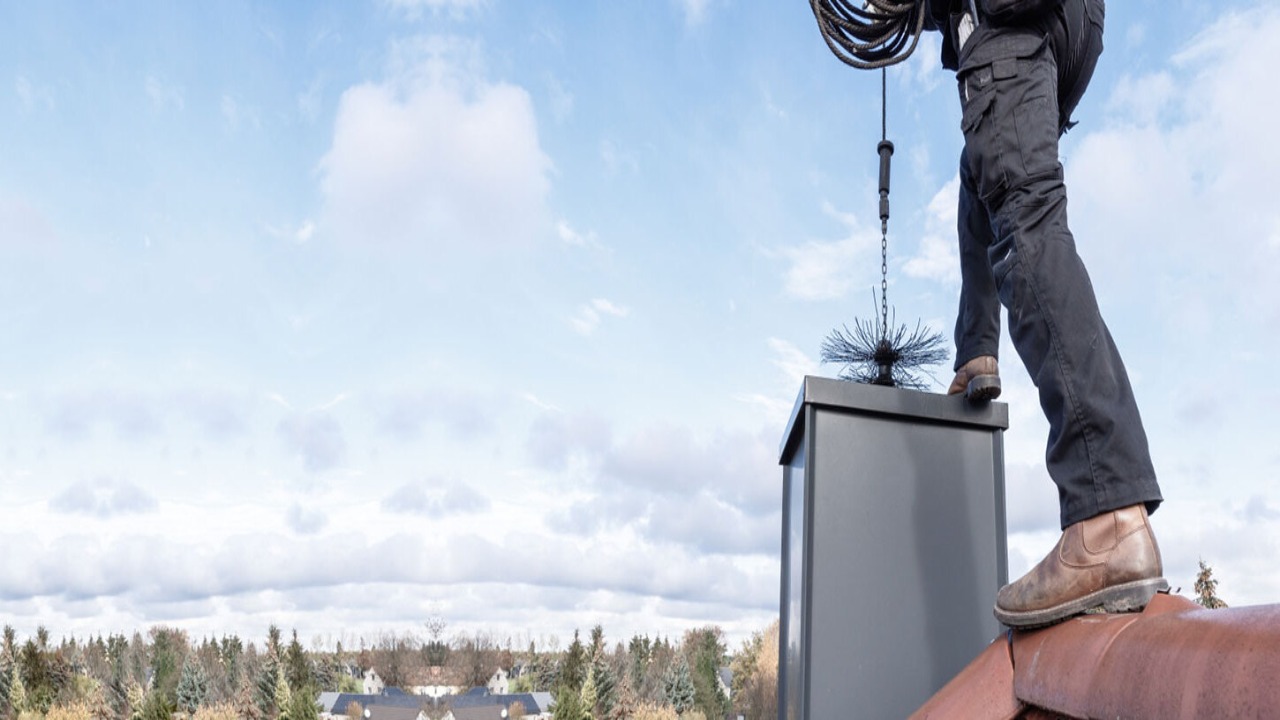
When Is the Best Time of Year for a Chimney Inspection?
Fireplaces are often a centerpiece of the home, providing both warmth and atmosphere. Like any system connected to heating and ventilation, however, they require regular care. One of the most important steps in this process is knowing when to schedule a professional chimney inspection.

Why Is a Chimney Inspection Important for Home Safety?
A chimney’s purpose is to safely move smoke and gases out of the home. When issues develop, they can affect both safety and efficiency. Over time, residue from burning wood can collect inside, while cracks in masonry or damage to the cap can allow moisture to enter. Left untreated, these problems reduce proper airflow, increase fire risks, and may even allow harmful gases to re-enter the living space. Regular inspections give homeowners peace of mind by identifying these concerns before they become costly hazards.
What Problems Can Develop in a Chimney?
Chimneys are exposed to heat, weather, and debris year-round. A common issue is creosote buildup inside the flue, which is highly flammable. Moisture can also cause deterioration, leading to leaks in the crown or cracks in the brick. In addition, caps sometimes loosen or break, allowing animals, leaves, or other debris to block the vent. Even small gaps in mortar can spread with freeze-thaw cycles, weakening the structure over time. Each of these issues makes inspections essential, regardless of how often the fireplace is used.
What Benefits Come From Having a Chimney Inspected?
Routine inspections deliver several important benefits. They improve safety by catching early signs of creosote deposits or structural damage. They also help maintain heating efficiency, since proper airflow allows fires to burn more cleanly. By addressing small problems, such as moisture intrusion or loose bricks, inspections prevent larger repairs later. Many homeowners also find that professional maintenance reduces odors from ash or soot and extends the life of their entire fireplace system.
What Role Does a Professional Chimney Inspection Play?
Certified inspectors don’t just glance at the surface. They use tools, cameras, and draft tests to check the liner, masonry, and ventilation system thoroughly. Depending on the situation, they may perform a Level 1 (basic annual check), Level 2 (video scan, often required during property sales or after damage), or Level 3 (involving partial removal of structure for hidden issues). The National Fire Protection Association sets the standard, recommending that fireplaces, chimneys, and vents be checked at least once a year to ensure safety and proper function.
When Is the Best Time of Year to Schedule a Chimney Inspection?
The most practical time for an inspection is late summer or early fall, just before the heating season. At this point, the chimney has likely been unused for several months, making it easier to spot cracks, leaks, or blockages that developed during spring and summer. Scheduling early also allows time for any necessary cleaning or repairs before the fireplace is used regularly in colder months. In some cases, homeowners who burn wood frequently may also benefit from a mid-season check.
How Much Does a Chimney Inspection Cost?
Costs depend on the type of inspection and the condition of the system. A routine check is relatively affordable, while advanced inspections involving cameras or structural work are more expensive.
| Inspection Type | Average Cost Range | Notes |
|---|---|---|
| Level 1 Inspection | $75 – $150 | Standard yearly maintenance |
| Level 2 Inspection | $150 – $400 | Includes camera evaluation |
| Level 3 Inspection | $500 – $2,000+ | Structural or concealed issues |
Disclaimer: Prices vary depending on location, chimney condition, and the provider. Always confirm with a certified professional before scheduling.
How Often Should a Chimney Be Cleaned and Inspected?
The general recommendation is at least once a year, even if the fireplace is rarely used. For those who burn wood often, more frequent cleanings may be necessary to remove soot and creosote. Professionals usually suggest cleaning once buildup reaches noticeable levels. Regular evaluations also help detect small leaks or cracks that could grow worse with seasonal weather.
What Do Professionals Check During a Chimney Inspection?
Inspectors review all key parts of the system, including:
Flue and liner: Checked for wear, buildup, and damage.
Masonry and brick: Examined for cracks or moisture entry.
Cap and crown: Ensured to be intact and preventing leaks.
Draft and ventilation: Tested for proper airflow.
Roof area around the stack: Checked for leaks or fire risk.
Fireplace interior: Reviewed for ash, soot, or signs of deterioration.
Each component plays a role in ensuring safe operation and long-term durability.
What Questions Do Homeowners Often Ask About Chimney Inspections?
Does an inspection help prevent fires? Yes, by finding buildup or damage before they create hazards.
Do I need one if I rarely use the fireplace? Yes, since weather damage or blockages can still occur.
Will this improve heating efficiency? Yes, better airflow supports a cleaner burn.
Is cleaning always included? Not always; it depends on the level of service chosen.
Why Should Chimneys Be Checked Before Winter?
The best time for an inspection is before fireplaces are in heavy use. This allows professionals to identify problems such as leaks, blockages, or structural cracks when they are easiest to fix. An inspection also ensures that draft, airflow, and venting systems are ready to handle the demands of colder months. With annual evaluations and timely cleaning, homeowners can enjoy safe, reliable heating without worrying about avoidable damage or hazards.
Read more: Chimney Sweep

